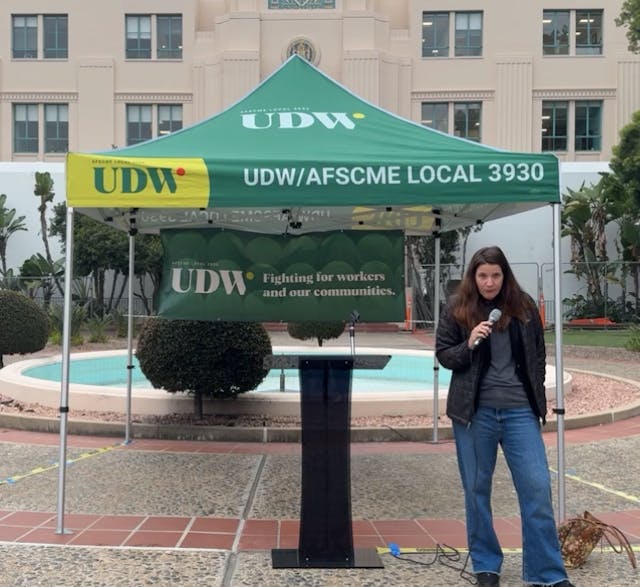Ready or not Common Core is here!
In 2010, California joined 44 other states in adopting the Common Core standards. These new, more rigorous standards call on students to be able to read and understand complex texts, and explain their reasoning through writing and conversation.
The new standards will pose particular challenges for designated English Learner (EL) students, who are already struggling to learn basic English. Many parents and teachers have concerns about how Common Core will affect EL students, and whether ELs will fall farther behind their native English-speaking counterparts when the new assessments begin in spring 2015.
About 1.4 million — nearly 25 percent — of the students in California’s public schools are designated ELs, according to a 2012 report published by the nonpartisan think tank Public Policy Institute of California. The vast majority — 85 percent — of California’s EL students speak Spanish at home. EL students’ scores lag behind their English-speaking peers in standardized testing and the state’s high school exit exam.
“It has always been the case for English Learners that they have a double challenge — learning the content while at the same time acquiring the language that gives them access to the content,” said Mary Waldron, the director of San Diego Unified District’s Office of Language Acquisition.
“Ninety-nine percent of the work of our office is professional development, which supports teachers in how to effectively support English Learners in those two areas,” she said.
San Diego County schools will get monetary support to implement Common Core, and potentially those funds could go toward supporting EL programs. Each district in California will get a slice of $1.25 billion in state money over the next two years to help implement the new standards. The funding can be used for professional development, instructional materials and the integration of technology.
In the South Bay Union School District, where 62 percent of students are Latino, Assistant Superintendent Shelley Burgess said her district has always allocated resources toward its English Language Development program.
“We also plan to use some of our funding to support our teachers in understanding the new ELD standards and how they work in concert with the Common Core State Standards to ensure the needs of EL students are met,” Burgess said.
But some critics of Common Core say there are no real guidelines in place for teachers developing their curriculum, and that teachers haven’t had enough time to prepare for the new standards.
“We’re not pretending like we’re ready,” said Joe Austin, principal of Joyner Elementary School in City Heights, where 77 percent of students are Latino and in any given year, 40 percent to 55 percent of students are designated ELs. “This year is going to be a year of discovery in lot of ways. We’re having a lot of great conversations about where we’re currently at with regard to teaching to these standards, what kind of momentum we already have going on and where are we most going to need to shift our instructional practice.
“But I think anyone who tells you that they’re ready for Common Core doesn’t quite understand Common Core yet.”
Austin said Joyner uses the systemic ELD approach, pulling beginner EL students out of the classroom for individualized attention. However, the school is also engaged in new ways of delivering instruction for ELs within the classroom, including building more content-specific support — frontloading vocabulary before reading a text, for example.
Joyner, like other California public schools, will take part in a field test of the Smarter Balanced assessment this spring rather than the old standardized tests. Students in grades 3-8 and 11, along with a small sample of students in grades 9 and 10, will participate. The field test scores won’t count, since the purpose of the testing is to validate exam questions and test schools’ technology infrastructure.
Only some states are participating in the field test, and in other states, only a representative sample of students will take the exam. Since all California schools will participate, students in the state comprise about 30 percent of all field testing, Austin said.
“The authenticity of this field test is driven largely by students in California,” he said. “And because as a state we have a high percentage of kids who are coming from language backgrounds other than English, how appropriate that they are a big focus of this field testing.”
While there is a lot of general concern about test scores falling initially as Common Core ramps up, Austin said he doesn’t feel anxious about it. He said the old CST system did not do a good job reflecting the quality of instruction in the classroom.
Ron Rode, executive director of the Office of Accountability for San Diego Unified, said it’s not valid to compare test scores from the old exam and the new, though he conceded people will inevitably draw such comparisons.
“I don’t want to characterize the scores as dropping,” Rode said. “The percentages will likely be lower, but we’re starting at a new baseline.”
The new tests will incorporate adaptive testing, which can pinpoint a student’s learning level more closely. With computer-adaptive assessments, if a student gets an answer correct, the next question will be more challenging. If the student answers incorrectly, the next question will be easier.
The assessments aren’t scored on the number of right or wrong answers. Rather, scores depend on how many items were answered correctly as well as the difficulty of the questions.
Rode said ELs that have been at a U.S. school less than a year won’t take the test. So ELs will have been in some kind of English program for at least a year before having to participate in testing.
“English Learners will also get certain accommodations built in to the testing program to support them,” Rode said. “For example, there could be a glossary with key terms that are translated, where the information could be presented in English as well as the native language.”
Despite three years of advanced preparation in California schools, many questions and challenges about Common Core still remain. Many teachers, parents and even administrators are still in the dark about the specifics of Common Core and how the new standards converge with English language development programs. Schools will need to evaluate how best to provide extra classroom support, varied instructional approaches and assisted technology for ELs, and one of the challenges going forward will be to disseminate such information clearly and consistently to all stakeholders.






